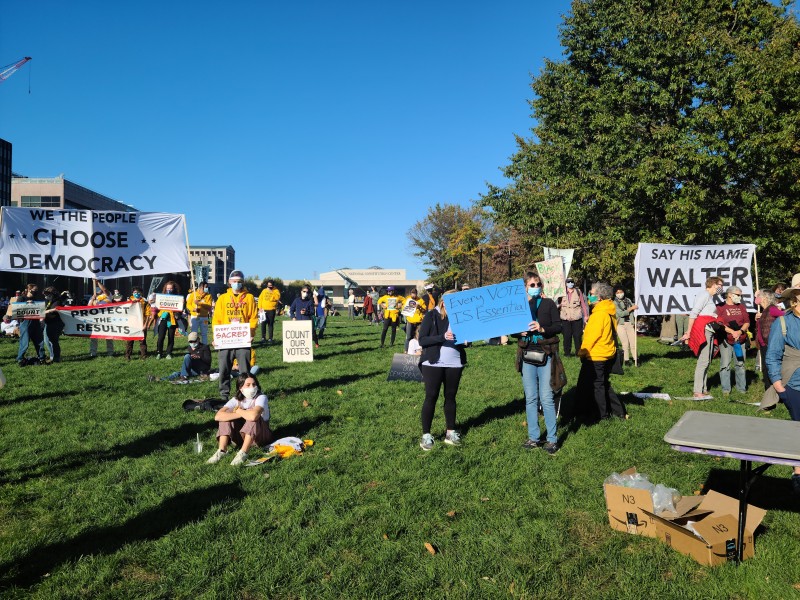How Does Income Inequality Drive Gun Violence?

The United States is a violent place. When you’re in the US, it can be difficult to see that the US is an outlier globally when it comes to violence. There is a much higher rate of homicide here than other wealthy nations at 100 per million people per year in 1990. Other wealthy countries had only 10 homicides per million people per year.
In 2021, Philly was one of ten cities in the US that reached its highest number of homicides on record. There were 562 homicides that year.
At Amistad Movement Power, we believe that we should be intervening in situations before there’s a homicide and that a crucial part of being able to do that is understanding why conflicts escalate to violence in the first place.
In developed nations like the US, the people who use violence most are young, disadvantaged men. Usually they use violence against acquaintances or strangers in competitive situations. Often the violence is the end of a conflict over honor, respect, or social status. When people have few resources and opportunities, social status becomes a resource that is worth defending with violence. This could be a small conflict between two poor men that quickly goes from 0 to 60. Added to this tinderbox is the ease of acquiring guns in places like Philadelphia; it’s not hard to see how the murder rate has risen so much.
In 2005, the average household income of the top 1 percent of US earners was over 20 times greater than the average household income of the remaining 99 percent. This is so much more than other countries in the Global West.
Philadelphia is the largest poorest city in the country with over 21% of Philadelphians living in poverty. In Philly, there are 57 blocks where 10 or more people have been shot since 2015. These blocks have a poverty rate almost double that of the city as a whole and the rate of vacant housing is three times higher than it is in the city overall.
In the 1930s, the federal government oversaw the creation of racist appraisal maps. Communities were redlined and marked as a financial risk if there were Black people and other people of color. This caused certain neighborhoods to be denied mortgages, insurance, or other services. Fifty Three of those 57 blocks were redlined a hundred years ago. The disadvantages that were created back then are still haunting the people who live in these areas today.
In his text “Killing the Competition,” psychologist Martin Daly makes the connection between income inequality and murder rates. Both across nations, and within them, inequality is often the most strongly correlated factor with homicide rates.
There is generally less violence in poor places with less income inequality than in areas that are overall wealthier but with more income inequality.
We could reduce the rate of violence in Philadelphia if there was less income inequality. This is a huge part of why we do the work we do. We need people in office who realize that we can’t keep putting more money into the police department at the expense of the vital services that are given scraps. We need visionary leadership who recognizes that we must invest in the communities most impacted by violence in Philly.
Join us every weekend until the primary election on Tuesday, May 16th as we canvass in West Philadelphia and Germantown for progressive candidates who can help turn the city around!


